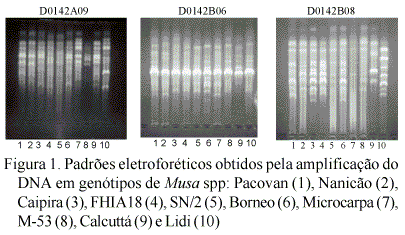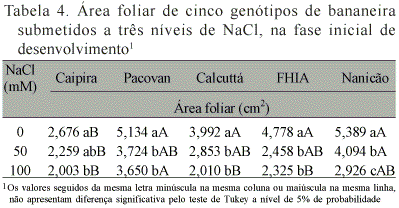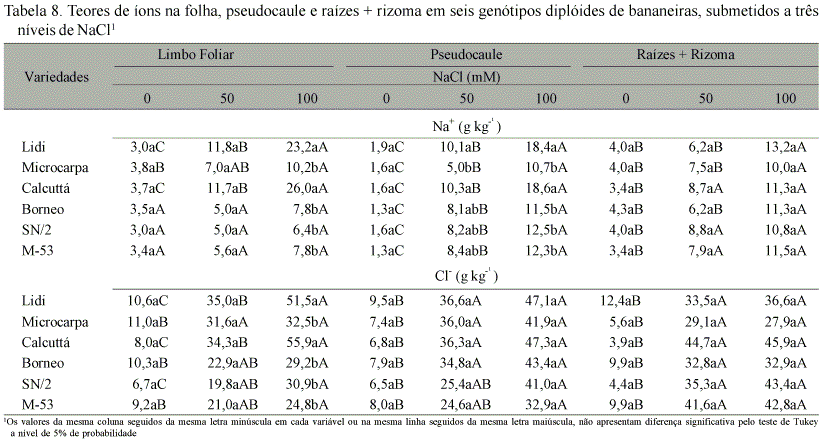Brazil is the second lagest banana producer. The State of Pernambuco has presented the greatest expansion of banana cultivation in the irrigated perimeters of the São Francisco Valley. In these areas, however, there are frequent problems with high salt content in the soil, which could turn out to be a major limiting factor to its cultivation. The utilization of cultivars tolerant to saline conditions is a rather viable alternative. Thus, identifying genotypes that adapt to the saline soil in the northeast region is fundamental for the genetic improvement. The objective of this study was to utilize molecular markers, obtained by the amplification of DNA via PCR with RAPD primers, in order to assess the genetic variability among ten banana genotypes (Musa spp): Pacovan, Nanicão, Caipira, FHIA18, Calcuttá, SN/2, Borneo, M-53, Microcarpa and Lidi, correlating their tolerance to saline stress. Twenty five primers were tested. The D0142A07 primer generated the greatest number of polymorphic loci, while the D0142B05 generated the lowest. In general, polymorphism generated with the DNA markers showed that, despite the narrow genetic base of those formed by the same genomic group, the banana genotypes exhibited a relatively high genetic variability. The varieties of higher tolerance to saline stress, such as Pacovan and SN/2, proved to be genetically distant when compared to the most salt sensitive, such as Calcuttá and Lidi.
salinity; RAPD; banana











